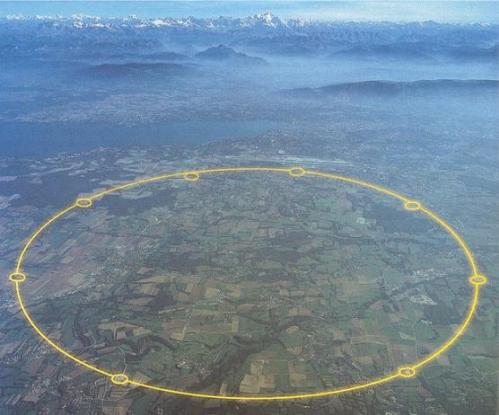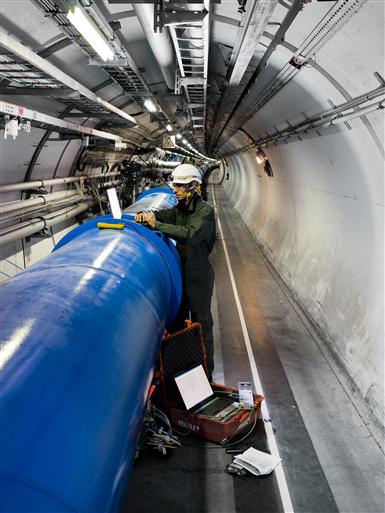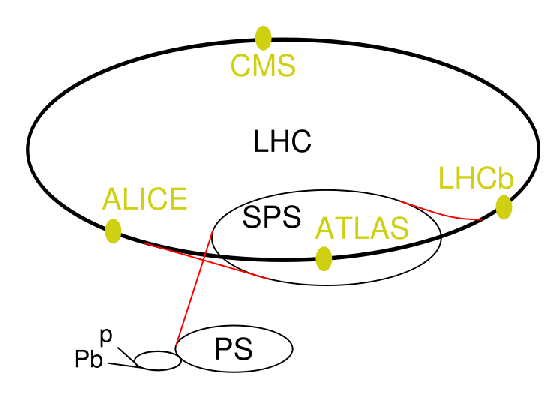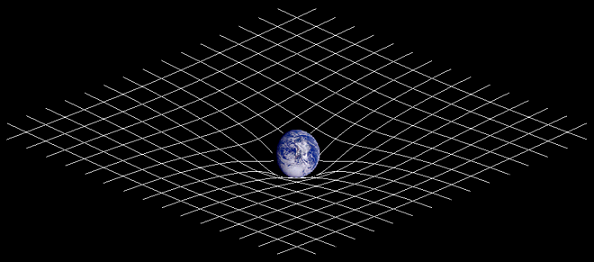CERN is the leading high energy physics laboratory in the world, their incredibly powerful particle accelerators are an important piece of their resume. Theoretically, they can create black holes.
Nearly half of the world’s particle physicists work on experiments conducted at the CERN facilities, which are located on the border between France and Switzerland. The acronym comes from Conseil Européen pour la Recherche Nucléaire (European Council for Nuclear Research). It was established in 1954, and now has 20 member states.
The World Wide Web was started as a project called ENQUIRE at CERN in 1989. They announced it would be free to everyone on April 30th, 1993.
CERN has built the Large Hadron Collider, which is a particle accelerator and a hadron collider that is 26.659 kilometers in circumference and will be located 50 to 175 meters undergroundHiggs Boson, strangelets, magnetic monopoles, supersymmetric particles and Micro Black Holes. [pictures below]. This is the one that is theorized to produce many novel particles including:
Particle accelerators and “atom smashers” are one and the same. Just like the name says, they are used to create collisions between [altered] atoms - they do this by utilizing electric fields to propel electrically charged particles at high speeds.
The LHC is just one piece of the puzzle. The picture below is of the LHC experiments and the pre-accelerators. Each piece of equipment has to do with particular experiments.
The goal of these experiments as well as particle physics in general, is to find the fundamental building blocks of this universe. A fundamental particle would be something that has no substructure - it is made up of no other particles. A micro black hole is sometimes categorized under “particle.”
Once we grasp that mass and energy are equivalent, it makes sense to destroy matter in order to release energy. Hence splitting of the atom to make energy. When you pair that information with 1) our belief that black holes are dense points in space and
2) our ability to use particle accelerators –>
we have some very interesting results to look forward to.
The “Planck Mass” is believed to be the unit of mass when both general relativity and quantum mechanics simultaneously become important. The Planck mass is very very small.
General relativity is best explained using the analogy of fabric, hence the fabric of spacetime. Take a blanket and stretch all four corners and place a ball in the middle. The fabric “bends.” It is that bend in the fabric that acts like gravity. Think of a marble circling the drain, only if the marble took eons to fall down the drain (eventually the moon will crash into the Earth).
Quantum mechanics is the study of the relationship between “indivisible units of energy” and mass. Think of fundamental particles, but in the sense of fundamental energy. It would be cool to know if the fundamental building blocks of this universe was energy - which is what string theory states.
The LHC might allow scientists to create a collision that reaches some incredible activation energy at the level of the Planck mass. Basically, there would be a lot of energy in a very small amount of mass. If that happens, we are going to get a whole lot of stuff that we probably couldn’t have predicted.
Start at the conservation of mass - at first glance a black hole don’t make sense. How can something go into a black hole and disappear [in all of its forms] from this universe? Where does it go? How is it not “here” anymore? Etc.
Stephen Hawking put forth a theory in which he predicts that a black hole will emit exact black body radiation, and has since been called Hawking Radiation.
A black body is an object that absorbs all light that falls on it. But, gives off radiation depending on its surrounding temperatures.
Stephen Hawking predicts that a black hole gives off thermal radiation inversely proportional to the mass of the black hole. The bigger the black hole, the less radiation it gives off.
It doesn’t make sense to me, but that is because he made “reliable” calculations far from a black hole in the framework of quantum field theory in curved space time.
If a black hole is losing more matter than it is taking in, it would make sense that the black hole will cease to exist. There is a tipping-point. If the mass of a black hole is less than X, we would expect it to eventually evaporate. If the mass of a black hole equals X, we would expect it to stay the same. If the mass of a black hole is greater than X, we would expect that the black hole continue to grow.
Lets go back to the fabric of spacetime. Lets call that ball in the middle of our sheet the sun. If the sun is 780 mm in circumference and 650 grams in weight [regulation basketball], a black hole could be smaller than a speck of sand and weigh more than our actual sun. The tricky part is that black holes can vary in size and mass, but they are probably governed by some function of energy.
It makes sense to conceptualize a black hole as a very massive singular point in space - massive means magnitudes of mass greater than our sun. That is why some might refer to a black hole as a single [super massive] particle.
So how big will the black hole that CERN makes be?
We can predict its mass based on the atoms, ions, etc. we are using to smash together, we also can estimate how much energy will be in that particle. IF they make one, it will most definitely be a micro black hole, and it will be much smaller than X.
It will quickly evaporate… hopefully.
What do we have to gain from all of this?
An outlandish guess is space travel at or near the speed of light.
A better understanding of Our Universe, is almost a given.
Courtesy:http://samescaredworld.wordpress.com/2008/03/05/man-made-black-holes/






No comments:
Post a Comment